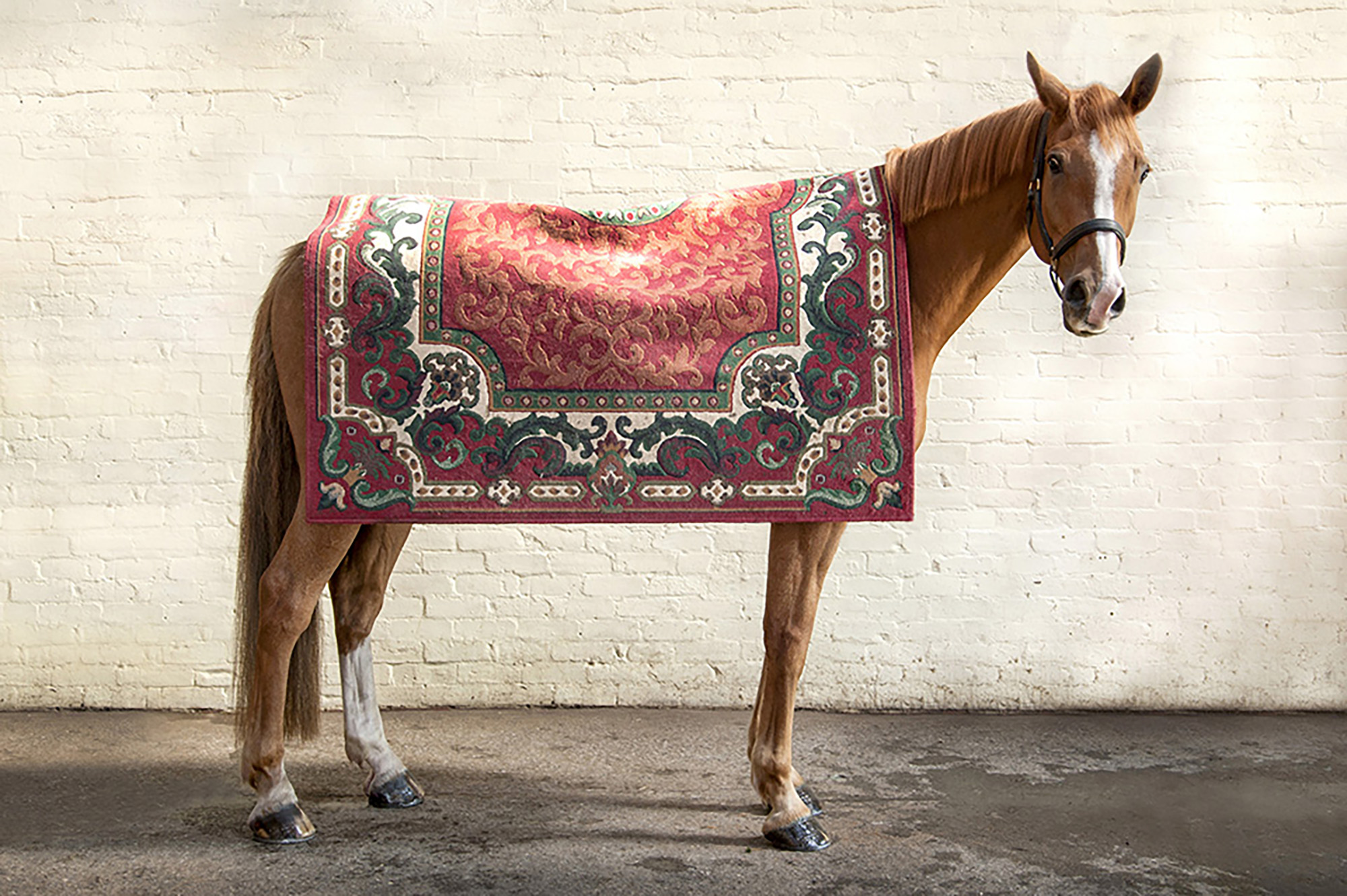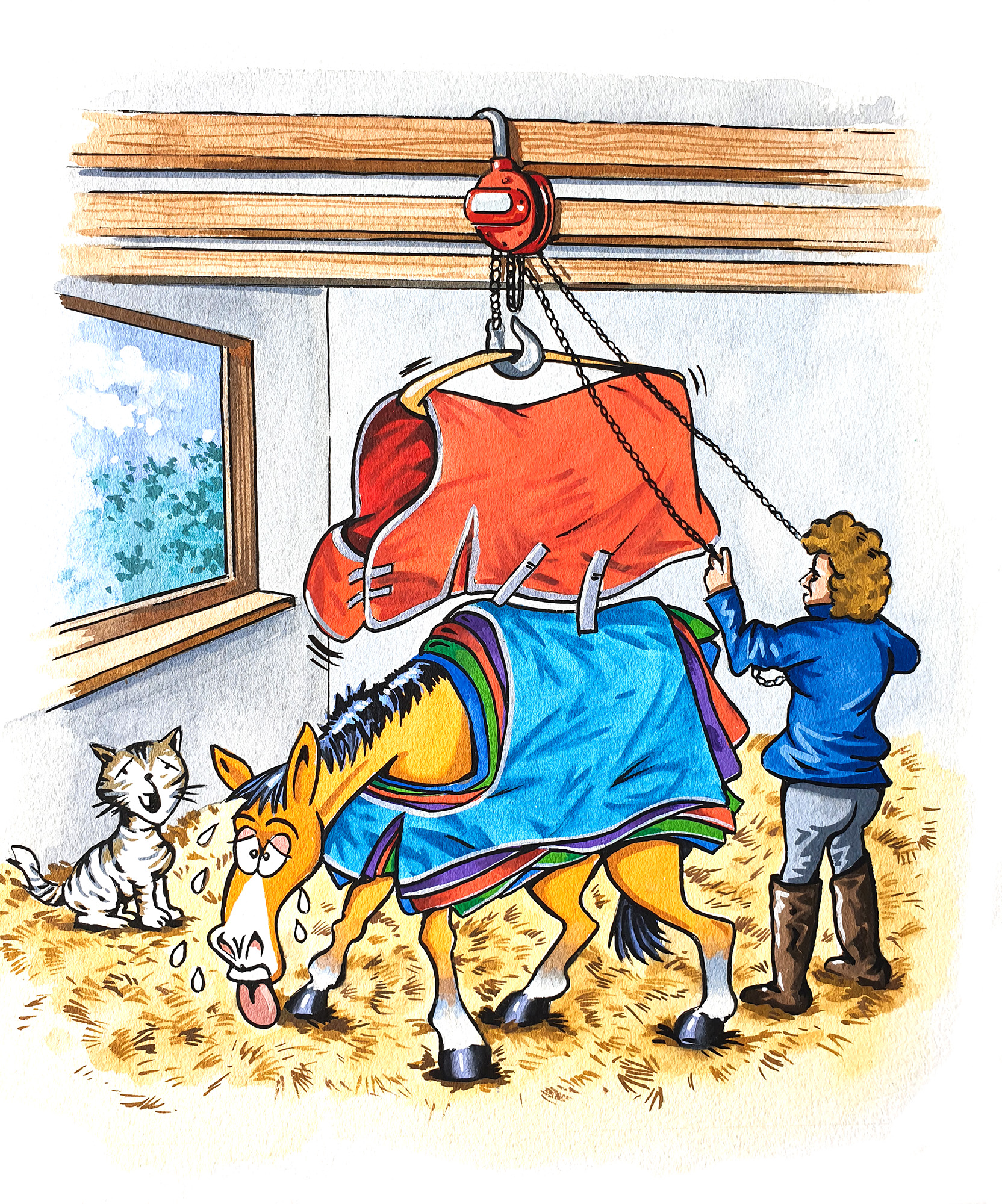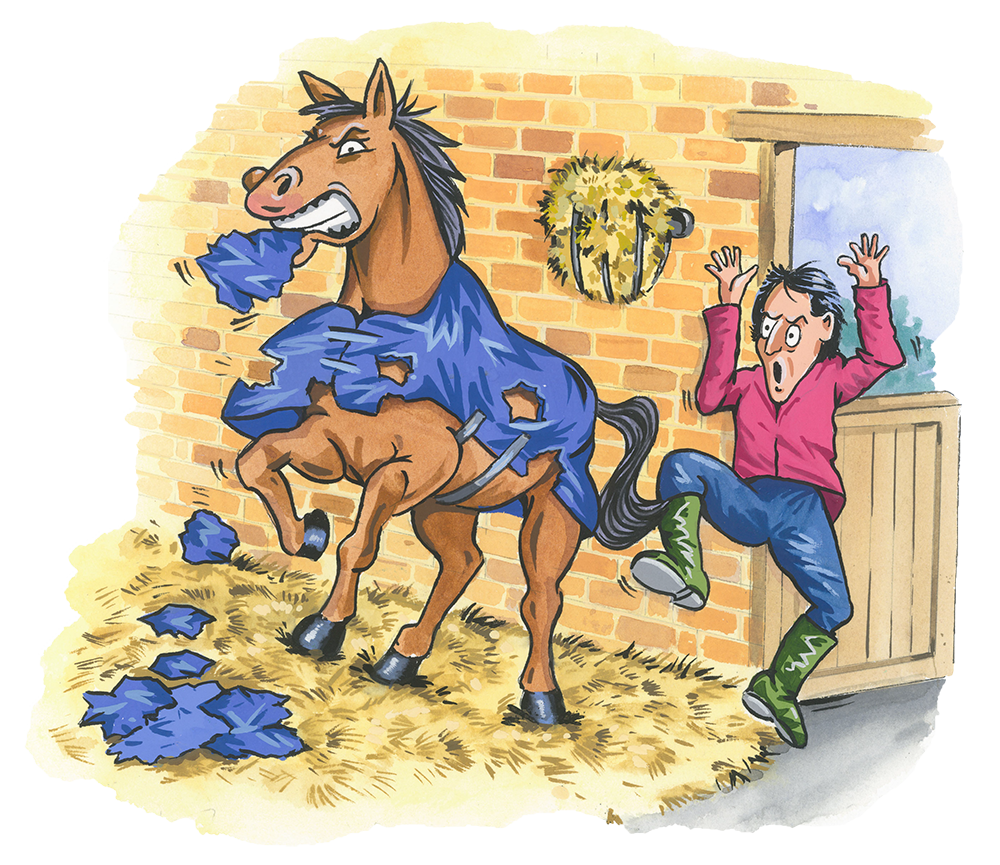

Here’s why
How many readers would put their hand inside the neck of a horses’ rug and think to themselves ‘ooh, that’s nice and toasty warm’.
Indeed, it may well be very pleasant to warm your hands after mucking out, cleaning icy water buckets and troughs, filling nets and making feeds, alongside all of the other, fun winter chores.
However, if our four-legged friends could speak – and we wish they could – we believe they would undoubtedly tell us that they feel way too warm and beg for them to be removed.
It’s a well-known fact that 21st century horse keepers, perhaps confused and misled by the plethora of options on offer, can become a little bit barmy about rugs.
We see the ‘must have’ new season colours, various weights, some practically heavier than the poor animal wearing them, indoor, outdoor, colour co-ordinated, double (or triple) bindings, fleeces, duvets, silver linings……the list goes on and on……and on.
Deciding whether a horse or pony needs a rug or not, can certainly be a complicated business. We accept that it is hard not to be influenced by personal feelings and the opinion of others. However, with a little thought and by following a few simple steps we feel an appropriate solution can be found.
It is firstly very important to become familiar with the natural skin temperature of the naked horse at rest.
The correct temperature of a horse is between 37.5 and 38 degrees Celsius. A useful learning exercise is to place your hand in a bowl of water prepared at this temperature – it will feel warm but certainly not hot.
Then go to an un-worked horse, without rugs and place the palm of your hand on the hindquarters or shoulder and wait several seconds, in order to become familiar with the surface temperature.
Warmth will develop, but it is highly likely that it will feel much cooler than the usual high temperatures experienced when feeling under a rug normally.
Then, fit a lightweight rug and leave in place for an hour or so, before placing the hand underneath to re-check the same areas. The temperature should not feel significantly warmer at all – if anything, a little cooler is best.
Any heat felt, above the bare coat or water temperature benchmark, would suggest that the horse is likely to be overheating, with subsequent the subsequent cooling required now completely out of the horses’ control.
Most unclipped horses that are stabled overnight should not need a rug at all – at least whilst temperatures stay above zero. When temperatures fall below freezing, then the type or number of layers can be reconsidered.
Ask yourself
- What type of stabling or shelter is available?
- How draught proof is the housing?
- How exposed is the site?
- What type and depth of bedding is available?
- How old is the horse or pony?
- How much freedom does the horse or pony have to move around and keep warm?
- Is there a sufficient supply of food?
These are all questions to answer that should guide the decision to apply a rug.
Of course when time is at a premium (and many of us lead very busy lives), scraping layers of mud off a horse prior to exercising will often guide the decision to start rugging up.
Modern rain sheets provide a good starting point. However, if the horse is not in work even this basic protection may really not be necessary.
A naked horse can scratch itches, be groomed by friends and simply do what horses do.
Enveloping a horse in rugs, (especially those with permanent neck covers), can be hugely restrictive to natural mechanisms and behaviour, limit freedom and compromise welfare as a result.
Recognising a horse that is feeling the temperature drop.
A horse that is feeling the cold is likely to have a fluffy appearance as its coat is designed to stand on end in an attempt to trap warm air between the hairs, acting as insulation.
This is all part of normal thermoregulation (another big word), whereby horses can naturally work to maintain their correct body temperature.
It can be useful to feel the base of the ears too (which should be warm).
Getting hands on (as described previously), will provide a good indication of whether the horses’ internal furnace is burning adequately.
How does the horse create its own heat?
This ‘furnace,’ aka the hind gut, needs forage to create heat from the fermentation process going on there. In cold weather horses need a supply of forage to allow this to happen.
Horses can tolerate low temperatures very well and will usually only shiver if exposed to wet and windy conditions. Appropriate shelter will limit the effects of wind chill.
Shivering episodes will burn calories, cause the horse to be miserable and lead to weight loss. Rugs should certainly be considered at this point – but the first priority should only be to keep the coat dry and a rain-sheet might suffice.
If the horse remains cool and clammy to the touch then a lightweight rug with no more than 200 gms of fill, is an appropriate next step.
The vast majority of horses will winter out in a rug of this weight without any trouble at all.
Something to think about…
In light of recent research, where horses have been trained to indicate whether they would like a rug left on or removed, perhaps we should all consider that a horse which removes or destroys rugs, maybe, just maybe, is cleverly trying to tell us something?

